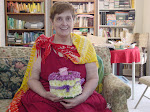While an editor at The New York Sun newspaper, Francis Church was handed a letter on September 20, 1897, and asked to write a response for the next day's edition. His editorial reply has become legendary.
Francis Church's father, Pharcellus, was a Baptist minister and journalist who founded The New York Chronicle.
Francis was a war correspondent for The New York Times during the Civil War. After the war, he and his brother established The Army and Navy Journal and Galaxy Magazine. When Galaxy merged with Atlantic Monthly, Francis became an editorial writer for The New York Sun.
The editorial was reprinted every year. However, it wasn't until after his death in 1906 that it became publicly known that Francis Church had written the editorial reply to Virginia O'Hanlon's 1897 letter.
From the Editorial Page of The New York Sun,written by Francis P. Church, September 21, 1897
"Dear Editor--I am 8 years old."Some of my little friends say there is no Santa Claus."Papa says, 'If you see it in The Sun, it's so.'"Please tell me the truth, is there a Santa Claus?
Virginia O'Hanlon115 West Ninety-fifth Street
Virginia, your little friends are wrong. They have been affected by the scepticism of a sceptical age. They do not believe except they see. They think that nothing can be which is not comprehensible by their little minds. All minds, Virginia, whether they be men's or children's are little. In this great universe of ours man is a mere insect, an ant, in his intellect, as compared with the boundless world about him, as measured by the intelligence capable of grasping the whole of truth and knowledge.
Yes, Virginia, there is a Santa Claus. He exists as certainly as love and generosity and devotion exist, and you know that they abound and give to your life its highest beauty and joy. Alas! how dreary would be the world if there were no Santa Claus! It would be as dreary as if there were no Virginias. There would be no child-like faith then, no poetry, no romance to make tolerable this existence. We should have no enjoyment, except in sense and sight. The eternal light with which childhood fills the world would be extinguished.
Not believe in Santa Claus! You might as well not believe in fairies! You might get your papa to hire men to watch in all the chimneys on Christmas eve to catch Santa Claus, but even if you did not see Santa Claus coming down, what would that prove? Nobody sees Santa Claus, but that is no sign that there is no Santa Claus. The most real things in the world are those that neither children nor men can see. Did you ever see fairies dancing on the lawn? Of course not, but that's no proof that they are not there. Nobody can conceive or imagine all the wonders there are unseen and unseeable in the world.
You tear apart the baby's rattle and see what makes the noise inside, but there is a veil covering the unseen world which not the strongest man, nor even the united strength of all the strongest men that ever lived, could tear apart. Only faith, fancy, poetry, love, romance, can push aside that curtain and view and picture the supernal beauty and glory beyond. Is it all real? Ah, Virginia, in all this world there is nothing else real and abiding.
No Santa Claus! Thank God! he lives, and he lives forever. A thousand years from now, Virginia, nay, ten times ten thousand years from now, he will continue to make glad the heart of childhood.
Eight year old Virginia O'Hanlon lived on the Upper West Side of New York City and firmly believed in Santa Claus. However, some of her less fortunate young friends said there wasn't any Santa Claus and began to put doubt in her mind.
Virginia asked her father, Philip, a doctor who worked for the New York Police Department, if Santa Claus was real.
In the past, the O'Hanlon family had written to the "Question and Answer" column in The Sun to settle matters of fact. Philip recommended his daughter write to their favorite newspaper seeking an answer to one of the most famous questions of all time.
Having her faith restored, Virginia grew up and graduated from Hunter College with a Bachelor of Arts degree in 1910. She received her Master's degrees from Columbia in 1911. In 1912, she began a 47-year career as a teacher in New York City and later became a school principal. Virginia died on May 13, 1971, at the age of 81.
Sunday, December 23, 2007
Subscribe to:
Comments (Atom)

